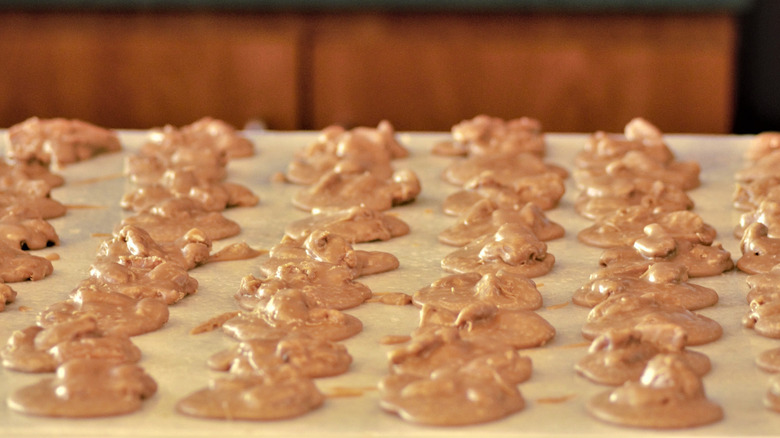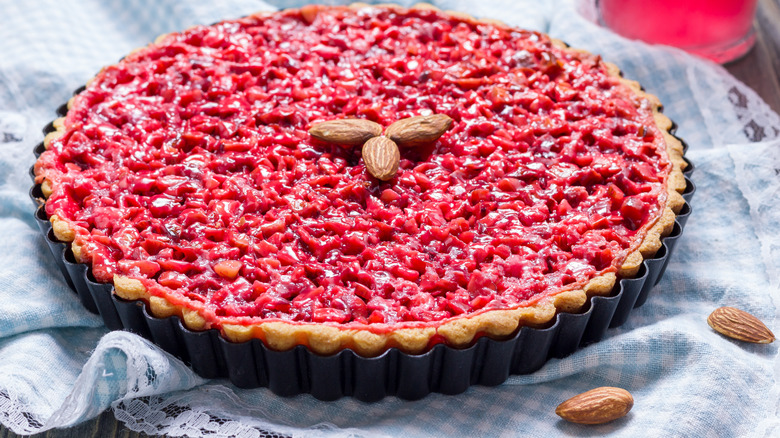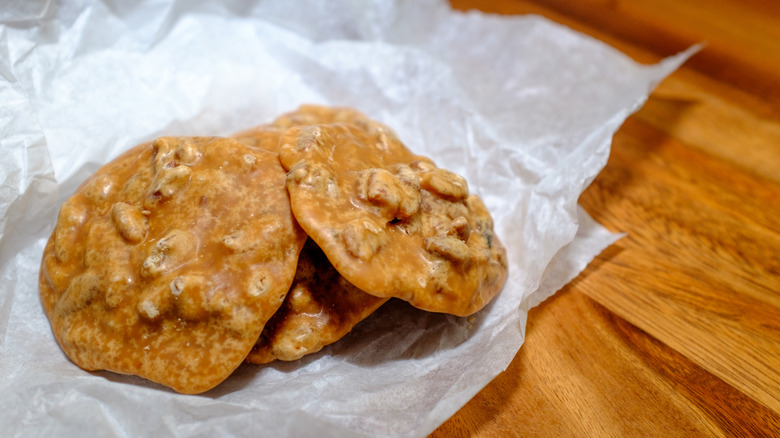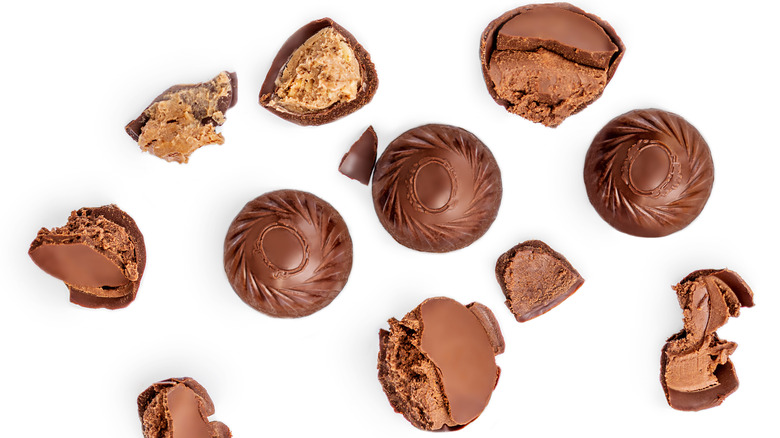3 Common Varieties Of Pralines, Explained
The word "praline" is a bit confusing — depending on what part of the world you're in, it can mean different things (as well as be pronounced in different ways!). However, one thing is the same: All pralines are a sweet treat. Some consist of nuts and sugar, and other types include chocolate and fancy cream centers. Although the earliest pralines have been around for centuries, today, there are three main different types that have developed through the ages: the French praline, the American praline, and the Belgian praline.
Pralines are sometimes confused with gianduja, but they aren't the same thing — it's likely the nutty flavor of both that causes the confusion. The praline originated in France, and historians believe it was Chef Clement Lassagne who invented the sweet, nutty treat long ago in the 17th century. There are several versions of how Chef Lassagne might have come up with the idea, including the accidental dumping of almonds into some hot caramel, or him following the smell of almonds and sugar to find children heating these morsels together over a candle. However the treat actually came to be, candy lovers are thankful — though you may get a slightly different sweet than expected if you don't know the differences between varieties of pralines. Here's how to tell them apart.
What is a French praline?
One of the beauties of decadent French food is that it's rich yet simple — so it's no surprise that they created one of the most well-known candies in the world using just a few ingredients. The original French praline is simply a mix of caramelized sugar poured over almonds. These pralines are also known for their pretty pink color, which is created by turning the caramelized sugar pink. You might find them sold in bags or even used to adorn desserts.
The candy was originally called "Praslin" after the Comte du Plessis-Praslin, for whom Chef Lassagne worked when the first pralines came into being. He eventually opened his own candy store (Maison de la Praslin); later, his recipe was sold to another confectioner, who opened a similar shop you can still visit today.
Although French pralines are often eaten on their own or used to make a dessert look pretty, they are also sometimes crunched up or blended together to make fillings for chocolates. No matter how you enjoy them, the French praline is the original and steeped in sweet history. But they evolved into another form as the sweet reached American shores.
What is an American praline?
If you head south and visit a candy store, you're sure to find pralines. It's said that the French settlers brought the decadent praline to New Orleans in the 1700s. Along with those settlers came the Ursuline nuns, who had the important job of preparing young women for marriage — so naturally, in the course of training girls in cooking and confectionary skills, they taught the girls to make pralines. However, there was one small problem: New Orleans didn't offer a lot of almonds. What they did have in abundance was pecans — so the pecan praline was born.
Fast forward to the 19th century, and the sale of pralines on the streets of New Orleans became so popular that the ladies who sold them were labeled "Pralinéres." These women were often poor and couldn't get jobs anywhere else, but they were so successful selling pralines that the candy became a signature candy of the Big Easy. Since that time, the pecan praline has become what's known as the American or Southern praline.
The Southern praline is made with pecans, butter, sugar, corn syrup, and milk. Everything is melted together and mixed with the pecan halves for a crunchy, sticky treat — and while they don't typically feature the pink coloring of French pralines, you can still find American pralines being enjoyed alone or in all sorts of other treats, from tarts to ice cream.
What is a Belgian praline?
Belgian pralines, on the other hand, are quite different from both American and French pralines; they often resemble a truffle or another chocolate candy filled with a creamy center. In 1857 — long after both French and American pralines had found their stride — a Belgian pharmacist named Jean Neuhaus found if he covered unpleasant-tasting medicine with chocolate, it was more bearable for his patients to take. His son, Jean Neuhaus Jr., took the idea a step further 50 years later by removing medicine from the equation and simply covering delicious cream and liquid centers with chocolate. They were called pralines, and the name stuck despite no real resemblance to the original French treat — although sometimes, French pralines are ground up and used in the cream-filled centers of the Belgian sweets.
At first, Jean sold his pralines in bags, but he quickly found that this wasn't a good enough presentation for his chocolate-covered candies, especially since they were delicate. Luckily for him, his wife created a pretty gift box for the pralines to both protect them and present them as a more gourmet treat, and the Neuhaus pralines can still be purchased in creative gift boxes today. So if you open a box of pralines to find a chocolatey treat rather than the sugary almonds or pecans you might have been expecting, don't worry — you've still got pralines, just the Belgian version.
Static Media owns and operates Tasting Table and Mashed.



